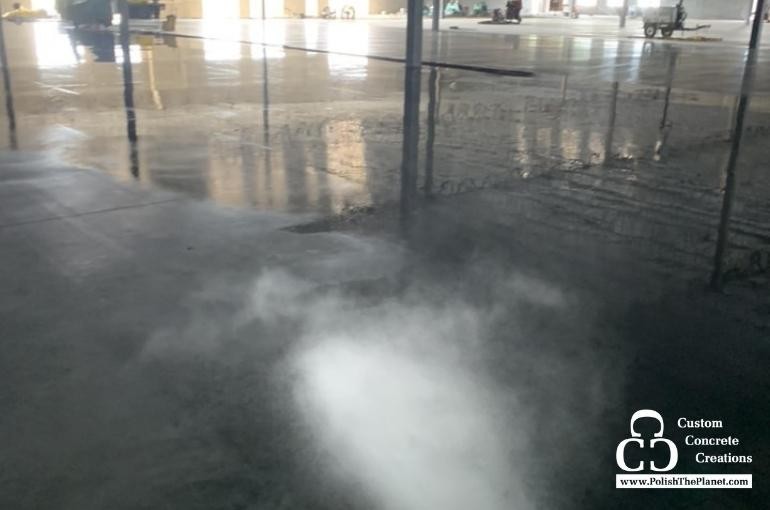
Concrete floors look great in all sorts of different environments. Some environments have more moisture than others, so it’s important to make sure the underlying surface of your space is properly taken care of before concrete is set on top. If you already have concrete flooring and you suspect a moisture problem, we wanted to go over some ways you can conduct a simple moisture test on your floor.
Custom Concrete Creations is your go-to place for an impressive concrete floor in the midwest. We’re professionals on the subject and are immensely passionate about concrete. There are three ways you can test the moisture levels in your concrete, and you can complete more than one method to get an accurate reading. Let’s first discuss how concrete dries and hardens from its once-wet state.
Concrete pouring and drying
Concrete begins as a wet substance made up of portland cement, aggregates and water. Water triggers a chemical reaction between the components and causes the concrete to harden. As it gets harder, more water evaporates from the concrete until it fully dries. Depending on the environment the concrete was poured in, it can take days or weeks for it to completely dry.
Too much moisture in concrete isn’t a good thing
If too much water is in the concrete mixture as it dries, over time it will begin to surface and cause cracks. Sometimes moisture can develop on a concrete surface when the outside humid air flows into a building with typically cool floors. This phenomenon is called concrete sweating. This can be dangerous, too, as it makes the floor slippery.
Three ways to combat this
The plastic sheet method is one way to test for moisture in concrete; you tape a plastic sheet to the surface of the concrete, creating a vapor-proof seal. You will want to leave this on for 72 hours and then use a dew point hygrometer to test the level of moisture in the air under that sheet. This will tell you how much evaporation occurred during that time frame.
The second way is the Anhydrous Calcium Chloride Test. This method is similar to the plastic sheet method, but you’ll test more areas of the floor. Specifically, you will test three locations for every 1000 square feet of concrete slab. This will give you a good estimate of moisture levels across the entire floor, rather than just one area. It is done by pouring a very dry packet of calcium hydroxide into a container, weighing it, placing it on the concrete and weighing it again after sitting on the concrete for 72 hours. The weight difference will tell you how much moisture was observed.
The third is the Relative Humidity Test using probes. This method is the most invasive, as you will drill a small hole into the concrete floor and put an electronic meter into the hole and, over the course of 72 hours, the meter will determine how much moisture exists in the core of the slab. You can also perform this test while the concrete is hardening.
So, which method is best? To get the most accurate measurement, a combination of the three is best. Performing both a surface and underground test can give you the amount of moisture at the surface and underneath. Getting an accurate measurement can give you a good idea of the next course of action. You may be able to get away with surface treatments, but a concrete professional can help when it comes to excessive moisture.
Talk to your concrete floor experts
Concrete floors are beautiful and many people are opting for them in their businesses and homes. Sometimes cracking and small holes can come up in these gorgeous floors. If you suspect your concrete floor may be cracking because of moisture, a professional will be able to tell you if this is for certain the cause and help prevent it. Contact us today with any concrete questions or concerns!
